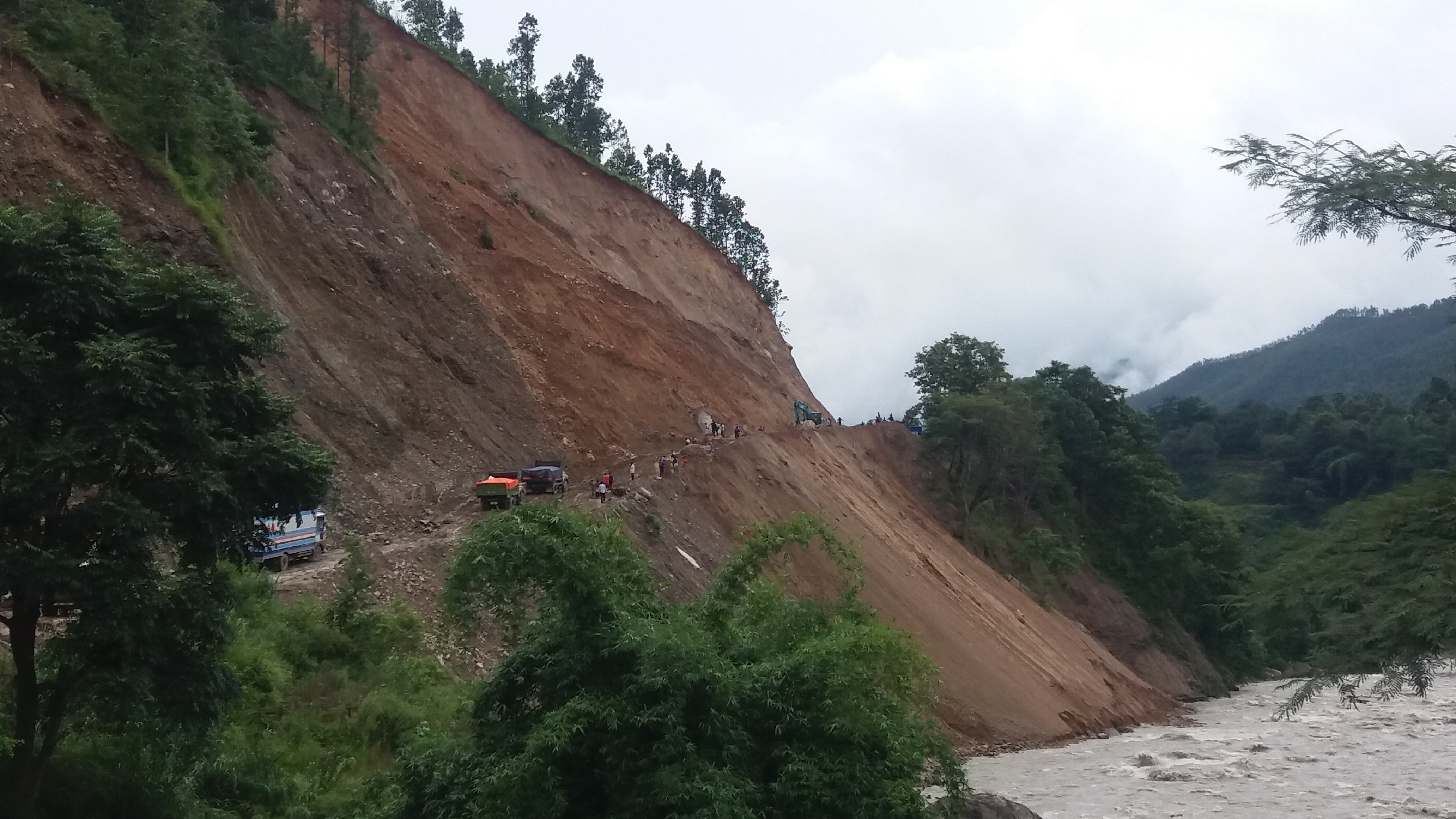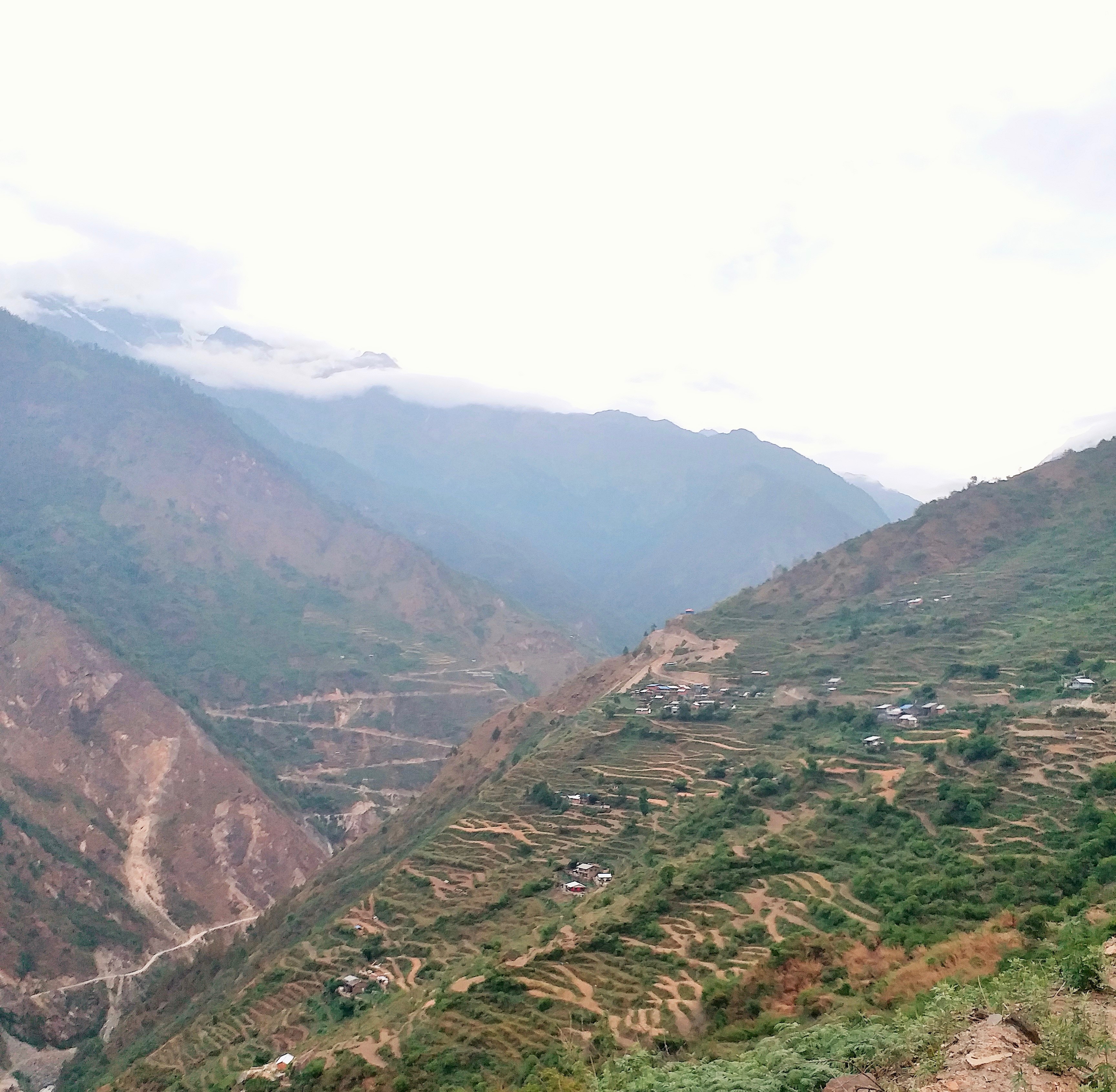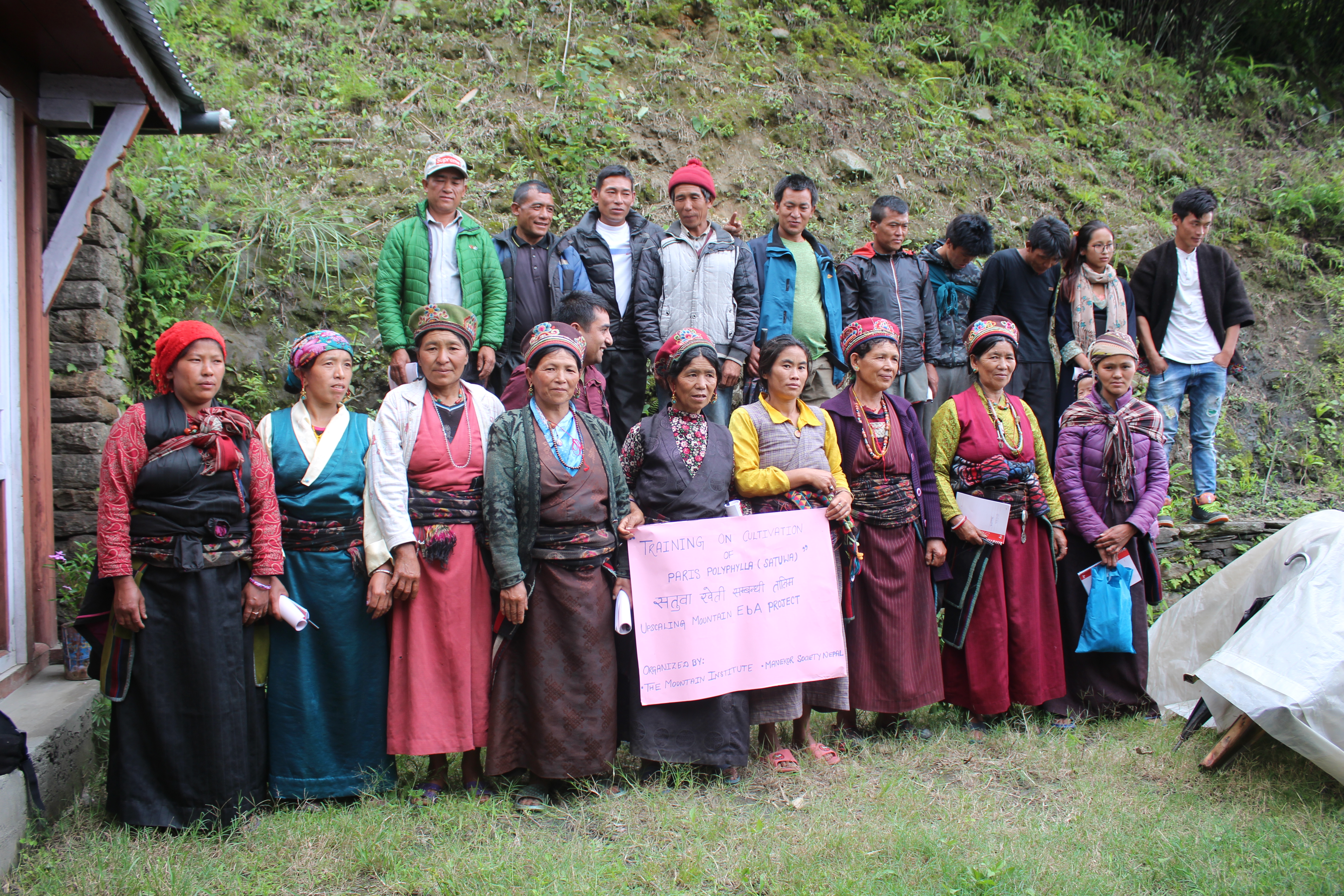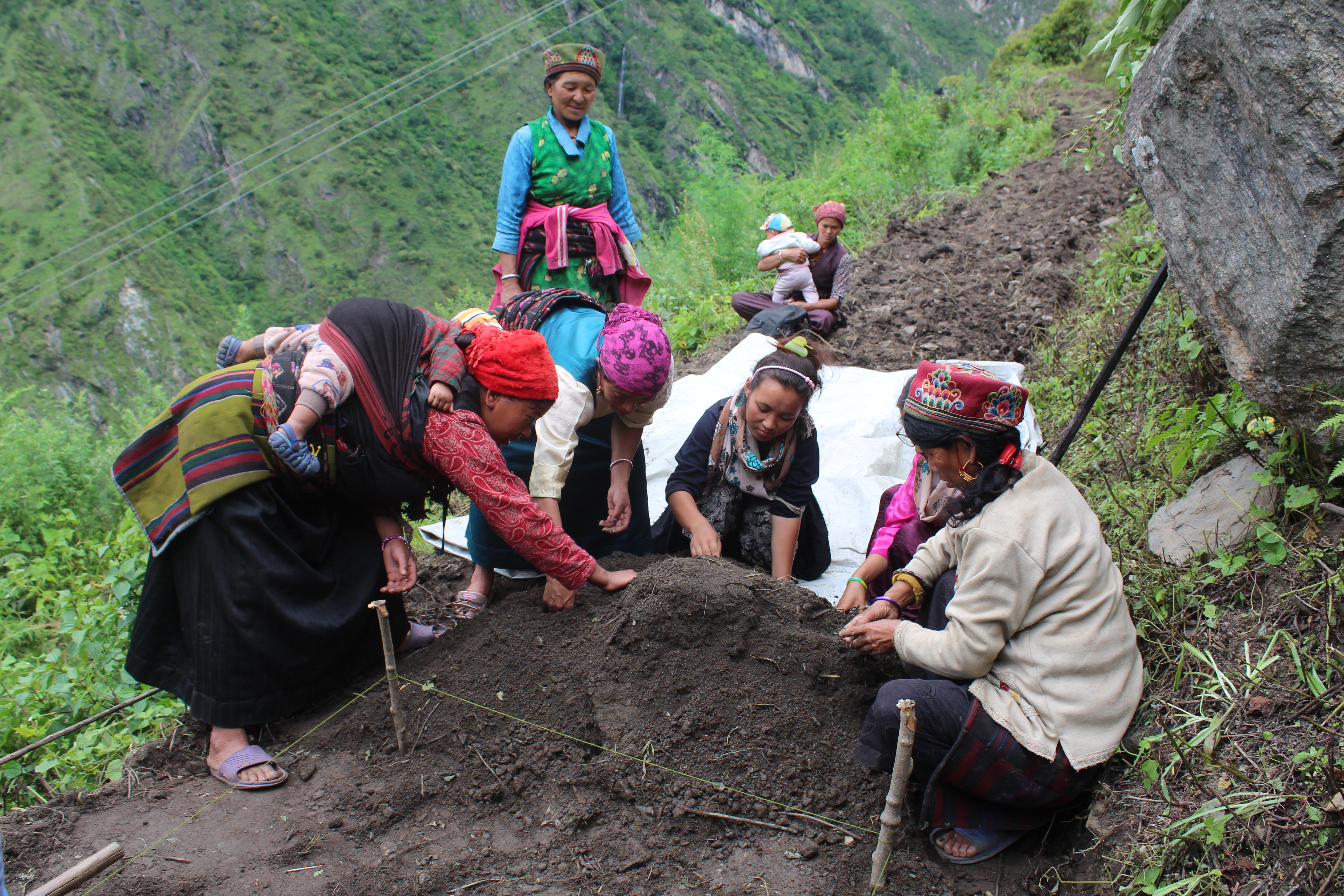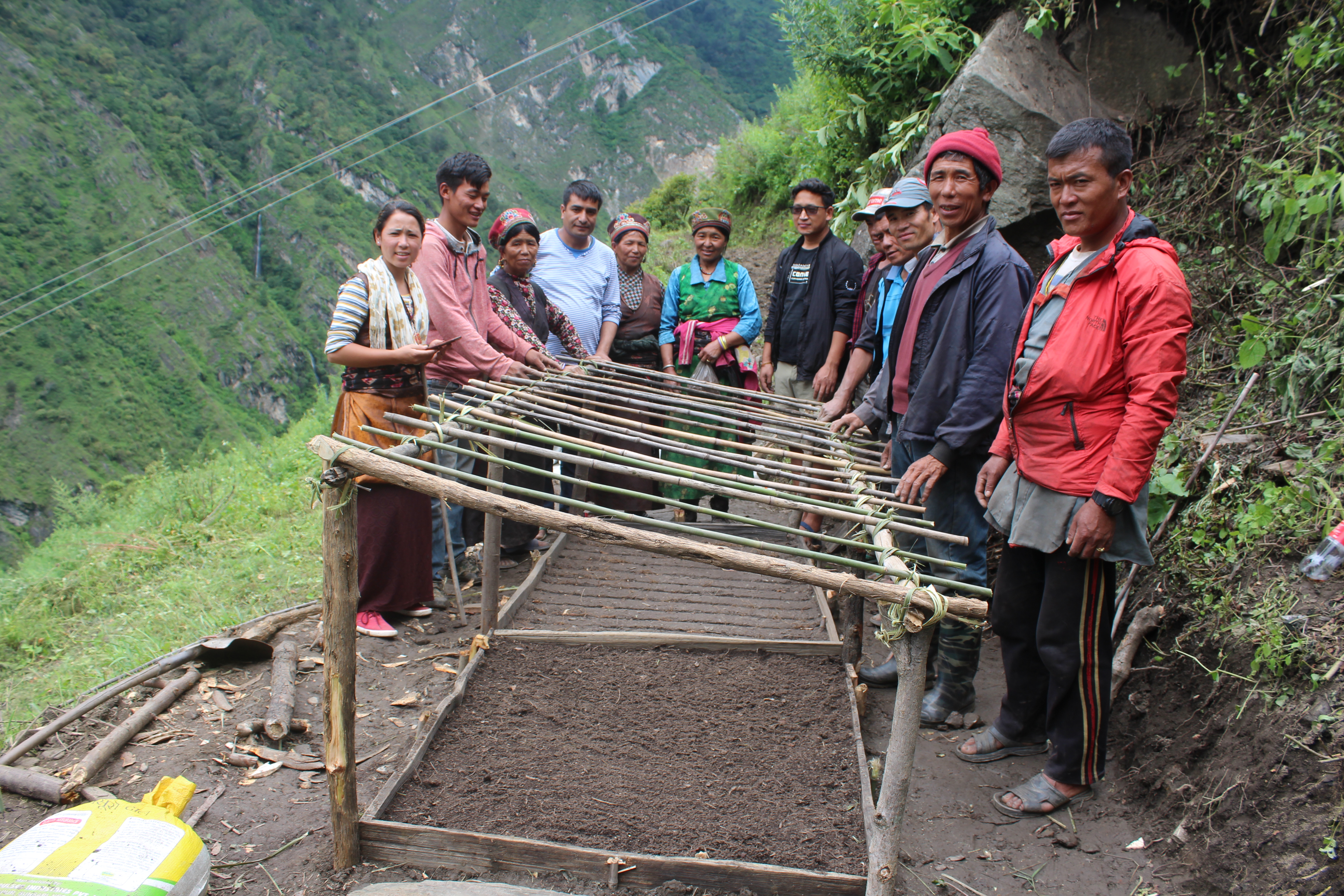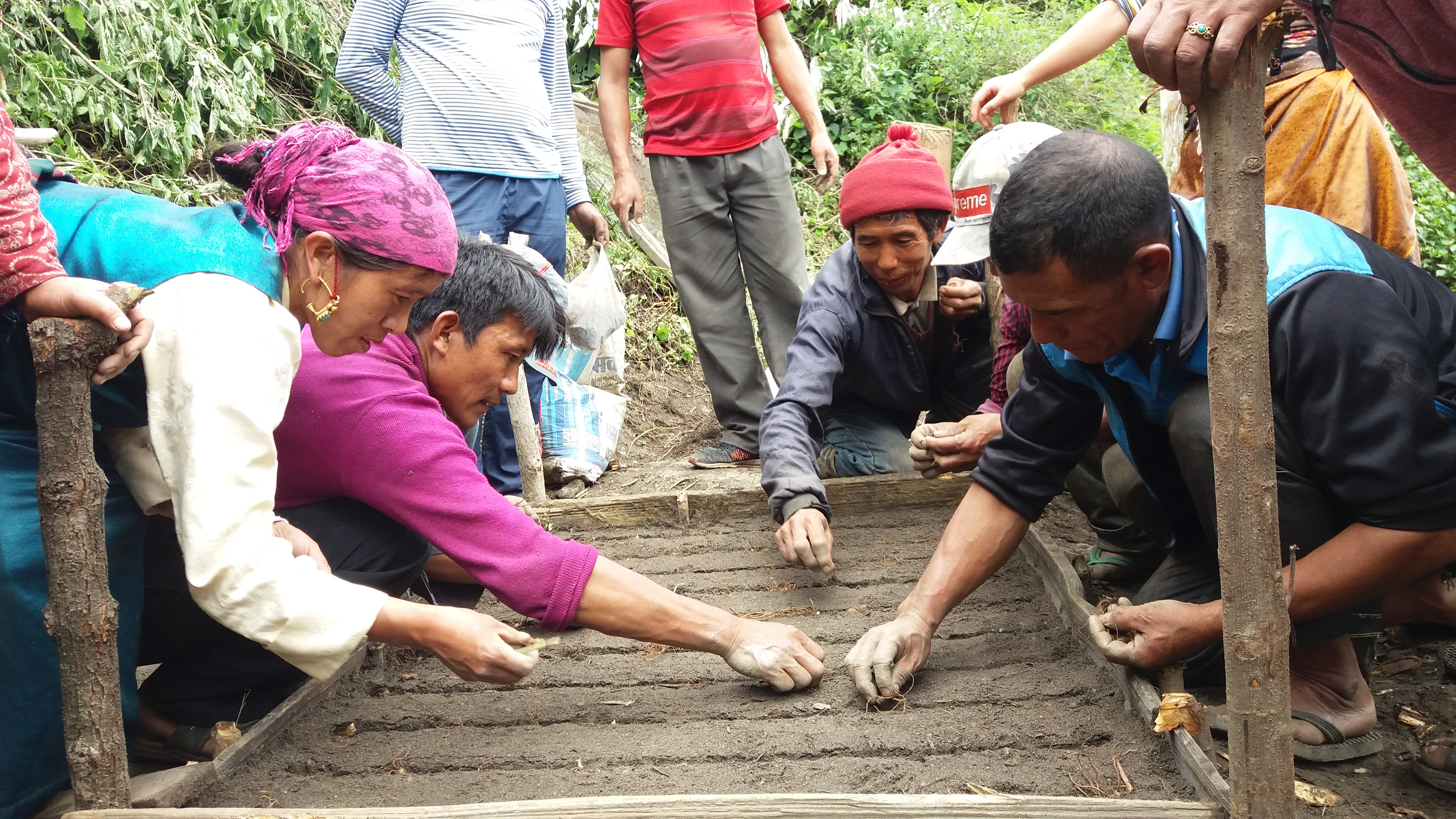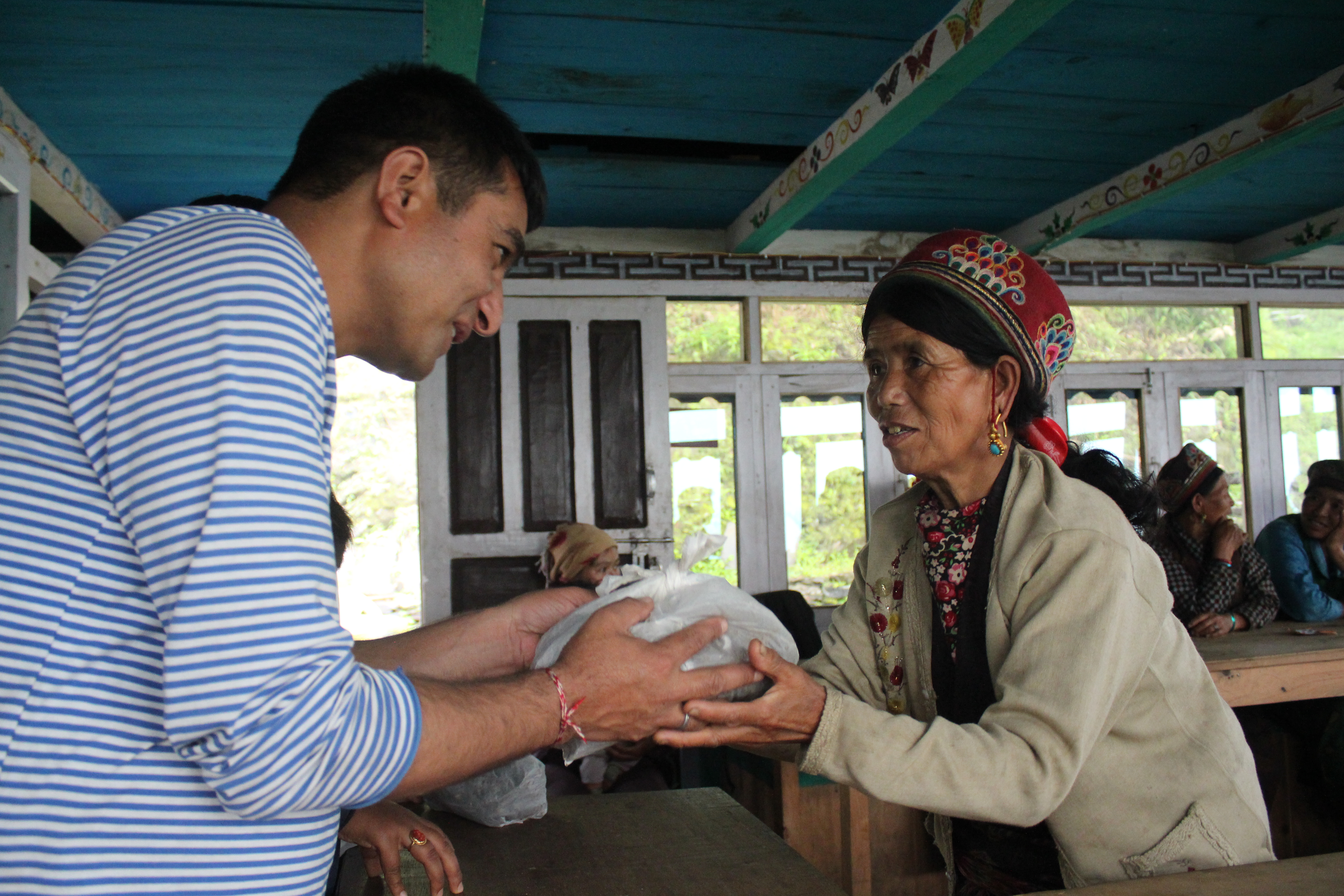Mountain EbA Nepal: Field Trip – Gongang village, Rasuwa District
NEPAL: Mountain EbA Field Trip to Gongang Village, Rasuwa District
As our Scaling Up Mountain EbA Program continues its work in the Panchase area of western Nepal, we began new projects in the Chilime watershed in Rasuwa District of Central Nepal. Our field trips to the remote mountain villages of Gongang and Tatopani were focused on implementing specific activities chosen during a participatory process that took place in these villages in December, 2017 and February, 2018. Cultivating, conserving, promoting and selling high-value medicinal plants in this watershed area was identified as a high priority for both communities. Of special interest was the plant Paris polyphylla, known locally as “satuwa.” Like many mountain villages, they are seeking sustainable ways to make a living while also conserving their surrounding ecosystems.We are very grateful to our local NGO partner, Manekor Society Nepal and to local representatives of Aama Chhodingmo Rural Municipality for their advice, feedback and support. Special thanks to Muna Tamang and Yubraj Poudel Chettri for their knowledge and assistance.
After our work in Gongang during the last few days of July, the MtEbA team headed to Tatopani village–a 2.5 hour uphill walk from Gongang. Read about our Tatopani field trip here.
Road to Rasuwa District
Himalayan Program staff plus a trainer for our MAPs Program headed to the field sites via Tribhuvan and Pasang Lhamu Highway. Heavy rainfall during the monsoon caused landslides and this very rough road had been blocked, then later cleared. The 8-hour drive from Kathmandu turned into a 2-day journey to reach an area near the village of Gongang in Rasuwa District. © A. Rai
View of Gongang village in Rasuwa
Gongang village is at 2,000 meters asl, about a 45 minute uphill trek from the access road. For the second part of this field trip, our team traveled on from Gongang to Tatopani village by foot. Tatopani and Gongang are located in the Chilime Watershed in Rasuwa district in Central Nepal. © I. Thapa
Training farmers in MAPs cultivation
A two-day training in Gongang aimed to enhance the theoretical and pratical knowledge for village farmers who were committed to cultivating valuable medicinal plants, including the plant known locally as Satuwa (Paris polyphylla). Satuwa is a species that is native to this area. Wild populations of this plant have become depleted due to overharvesting and unsustainable wild harvests. The MAPs trainer, Yubraj Poudel Chettri, is from Ilam District in Eastern Nepal and is a MAPs farmer himself. He has been an associate of The Mountain Institute since 2001. © A. Rai
Satuwa Training, participants from Gongang Village
Key topics covered in this training were the importance and types of medicinal and aromatic plants (MAPS), their cultivation and conservation, sustainable methods for planting, harvesting, storage and seed collection. Participants were also involved in practical discussions about market conditions and management, opportunities, challenges and current regulations related to MAPs in Nepal. There is strong, international demand for Paris polyphylla – satuwa. In Nepal, this plant is listed under the “threatened” category so it is important to conserve wild populations and shift to sustainable cultivation and harvesting. Cultivating and selling satuwa rhizomes can become a profitable livelihood for villagers and serves as a positive alternative to wild harvesting. © A. Rai
Farmers prepare nursery beds
After training focused on sustainable cultivation techniques for Satuwa (Paris polyphylla), participants moved on to the practical session of building nursery beds using locally available tools and materials. © A. Rai
Nursery beds finished and ready for planting
Locally available materials such as forest soil, sand, wooden planks and local agricultural tools were used to build nursery beds. Sand was collected from a nearby stream bank, soil and logs came from the community forest and were gathered in a sustainable manner with consent from the Forest User Group and chairperson. © A. Rai
Transplanting Satuwa rhizomes
After learning about Satuwa’s habitat, altitudinal range, sustainable ways to cultivate both seeds and rhizomes, plus its medicinal uses and importance, it was time to practice planting methods in the newly built nursery beds. © A. Rai
Distributing Satuwa rhizomes to training participants
The MAPs trainer, Mr. Yubraj Poudel Chettri distributed 200 satuwa rhizomes to each participant who completed both the theoretical and practical sessions. Satuwa can be used as a pain reliever, an antispasmodic medicine and a treatment for diphtheria and epidemic Japanese B encephalitis. A mixture of its roots and rhizomes can be used to treat poisonous snake and insect bites and wounds. Each farmer has committed to building a nursery and planting these rhizomes ASAP. A MAPs Farmers Group in each village was established and will serve as both a monitoring and support group for the newly trained MAPs farmers. © I. Thapa
